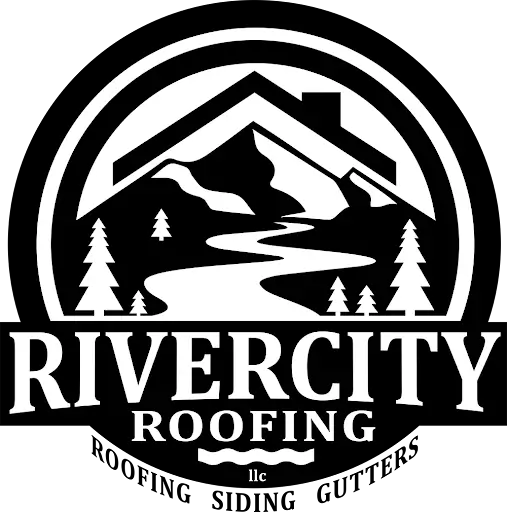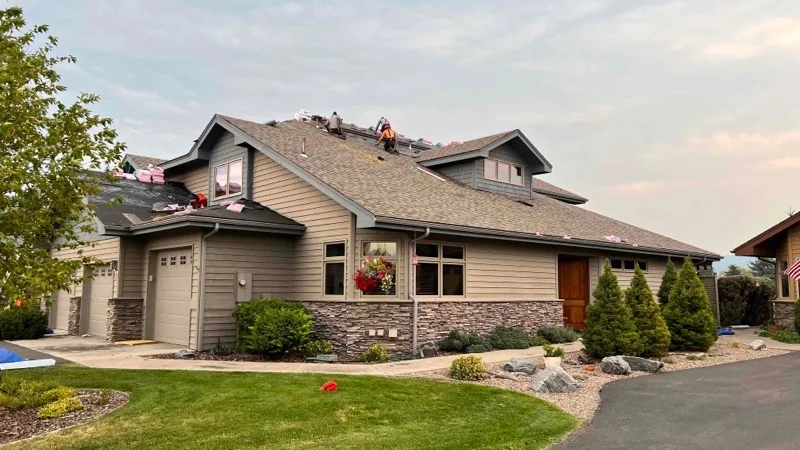Determining how often should a roof be replaced is a critical question for homeowners, given the roof’s vital role in protecting their home from the elements. A roof’s lifespan can significantly affect both the safety and the financial value of a property, making it imperative for owners to stay informed about roof maintenance and replacement schedules. Recognizing the best time to replace a roof can save homeowners substantial money and prevent potential damage to their homes.
This article will explore the various factors that influence a roof’s lifespan, including materials used and environmental conditions, and identify signs that indicate a roof needs replacement. It will guide how often to replace different roofing materials and discuss the benefits of timely roof replacement. Understanding how often a roof needs to be replaced and recognizing the signs that it’s time for a new roof can help homeowners maintain the integrity of their homes efficiently.
Factors Affecting Roof Lifespan
Several factors influence the longevity of a roof, from the materials used to the quality of installation and the climate it faces. Understanding these elements can help homeowners decide about roof maintenance and replacement.
Material Type
The choice of roofing material significantly impacts its lifespan. Asphalt shingles, while cost-effective, typically last about 20 years with proper maintenance. Metal roofs offer enhanced durability, resisting harsh weather and lasting up to 50 years or more. Wood shingles provide a classic look but require more upkeep, with lifespans ranging from 30 to 80 years, depending on the wood type. Slate and clay tiles are known for their longevity, often over a century, while innovative materials like composite shingles can last 40-50 years.
Climate and Weather Conditions
Roof longevity is heavily affected by local weather conditions. Extreme weather, such as hail, heavy snow, and high winds, can cause significant damage. In hot climates, asphalt shingles can become brittle and degrade faster under intense UV exposure. Conversely, in colder regions, materials must resist freezing and thawing cycles. Regions with frequent rainfall or high humidity require roofing materials that offer superior waterproofing to prevent leaks and water damage.
Roof Design and Installation Quality
The roof’s design and its installation’s quality play crucial roles in its overall durability. Poor installation can lead to many problems, including premature wear and leaks. Proper attic ventilation prevents moisture buildup that can weaken the roof structure. The roof’s pitch also affects its ability to shed water and resist wind. Choosing a skilled and Reputable Roofing contractor is vital to ensure the roof is installed correctly and withstand the elements.
Maintenance and Care
Regular maintenance is key to extending the life of a roof. This includes routine inspections to catch and repair minor issues before they escalate, cleaning debris from the roof and gutters, and preventing moss and mould growth, which can damage roofing materials over time. Homeowners should also be vigilant about removing overhanging tree branches that can scrape against the roof and cause damage.
By considering these factors, homeowners can better understand how to maintain their roof’s integrity and extend its lifespan, ultimately protecting their investment and ensuring their home remains safe and secure.
Signs Your Roof Needs Replacement
Age of the Roof
A roof’s age is a primary indicator of its need for replacement. Typically, if a roof is over 20 years old, it may be nearing the end of its useful life, especially if it is not properly ventilated or if it has been exposed to severe weather conditions. Regular inspections can help determine the remaining lifespan of the roof, but once it reaches around 80-85% of its expected lifespan, planning for a replacement is advisable.
Visible Damage
Visible signs of wear and tear, such as cracked, curled, or missing shingles, are clear indicators that a roof may need replacement. Additionally, if granules from the shingles are found in gutters or if there is significant discolouration or moss growth, these are signs that the shingles are no longer effectively protecting the roof. Vegetation growth, like moss or lichen, on the shingles can also retain moisture and cause further damage, necessitating immediate action.
Water Leaks
Water leaks are often the most urgent sign that a roof needs replacement. If there are water stains or discolouration on ceilings or walls, or if the attic shows signs of water damage, such as a sagging ceiling or mould growth, these are indications of potential roof failure. It’s important to address these leaks promptly to prevent further interior damage.
Moss and Mold Growth
The presence of moss, mold, or algae on a roof can lead to serious structural and health issues. These growths suggest that there is excess moisture on the roof, which can degrade roofing materials over time. In cooler, damp climates, moss can grow on surfaces that do not receive much sunlight, holding moisture against the roof surface and eventually damaging the shingles. Mold and mildew growth can also cause respiratory problems and other health risks, making it crucial to address these issues swiftly.
How Often to Replace Different Roofing Materials
Asphalt Shingles
Asphalt shingles, a prevalent choice in places like Sacramento, CA, offer durability and affordability with warranties of up to 30 years. Their lifespan typically ranges from 15 to 30 years, influenced by local weather conditions. Three-tab shingles, the most economical option, last about 15-20 years. Architectural shingles provide a longer lifespan of 20-30 years, while premium shingles can last 25-40 years, depending on maintenance and environmental factors. Key factors affecting their durability include installation quality, attic ventilation, and exposure to extreme weather.
Metal Roofing
Metal roofs are known for their longevity and durability, lasting between 40 and 70 years with proper maintenance. The lifespan can extend up to 50 years on average, with factors like installation quality, climate, and regular maintenance playing crucial roles. Metal roofs resist corrosion and damage from environmental elements, though they require regular inspections to manage potential issues like rust or structural damage.
Tile Roofing
Tile roofs stand out for their impressive lifespan, often lasting 50 years or more, and can extend up to a century with proper care. They are particularly resistant to harsh weather conditions, including high winds and UV exposure. Regular maintenance, including inspections and cleaning, is essential to maximize their lifespan. Concrete tiles can last from 25 to 50 years, while clay tiles can exceed 100 years if maintained properly.
Wood Shingles and Shakes
Wood roofing materials like cedar shakes and shingles offer a natural aesthetic with a significant lifespan of 30 to 80 years, depending on the type and maintenance. Cedar can last 30-50 years, while more durable woods like teak may last up to 80 years. Regular maintenance, including replacing damaged shingles and managing moisture, is crucial to extend their life and maintain structural integrity.
Benefits of Timely Roof Replacement
Replacing a roof at the right time brings several benefits, including improved home value, enhanced energy efficiency, increased safety, and an extended lifespan of the new roof.
Improved Home Value
A new roof significantly boosts the property’s appeal and value. Potential buyers often view a new roof as a major advantage, knowing it spares them future repair costs. This perception can directly increase the home’s market value and make it more attractive in competitive real estate markets.
Enhanced Energy Efficiency
Modern roofing materials and designs focus on energy efficiency, which can reduce heating and cooling costs significantly. Features like better insulation, reflective properties, and optimal ventilation reduce the energy demand of a home, leading to lower utility bills and a more comfortable living environment.
Increased Safety
Old or damaged roofs can pose various safety risks, from structural collapses to water-induced mold issues that affect air quality. Replacing an ageing roof can mitigate these risks, ensuring the safety and health of the home’s occupants.
Extended Lifespan of the New Roof
Investing in a new roof involves using modern materials that are engineered to last longer and withstand harsh weather conditions better than older materials. This not only reduces the frequency of needed replacements but also decreases long-term maintenance costs.
Conclusion
Understanding the various factors that influence the lifespan of a roof, such as material type, climatic conditions, design, installation quality, and the extent of maintenance, empowers homeowners to make well-informed decisions about when to replace their roofs. By recognizing signs of wear and choosing the right time for roof replacement, homeowners can protect their investment, ensuring their home remains safe, energy-efficient, and aesthetically pleasing. It’s also crucial to consider the unique benefits that timely roof replacement brings, including improved home value, enhanced safety, and peace of mind knowing your home is adequately shielded against the elements.



